A matter of antimatter
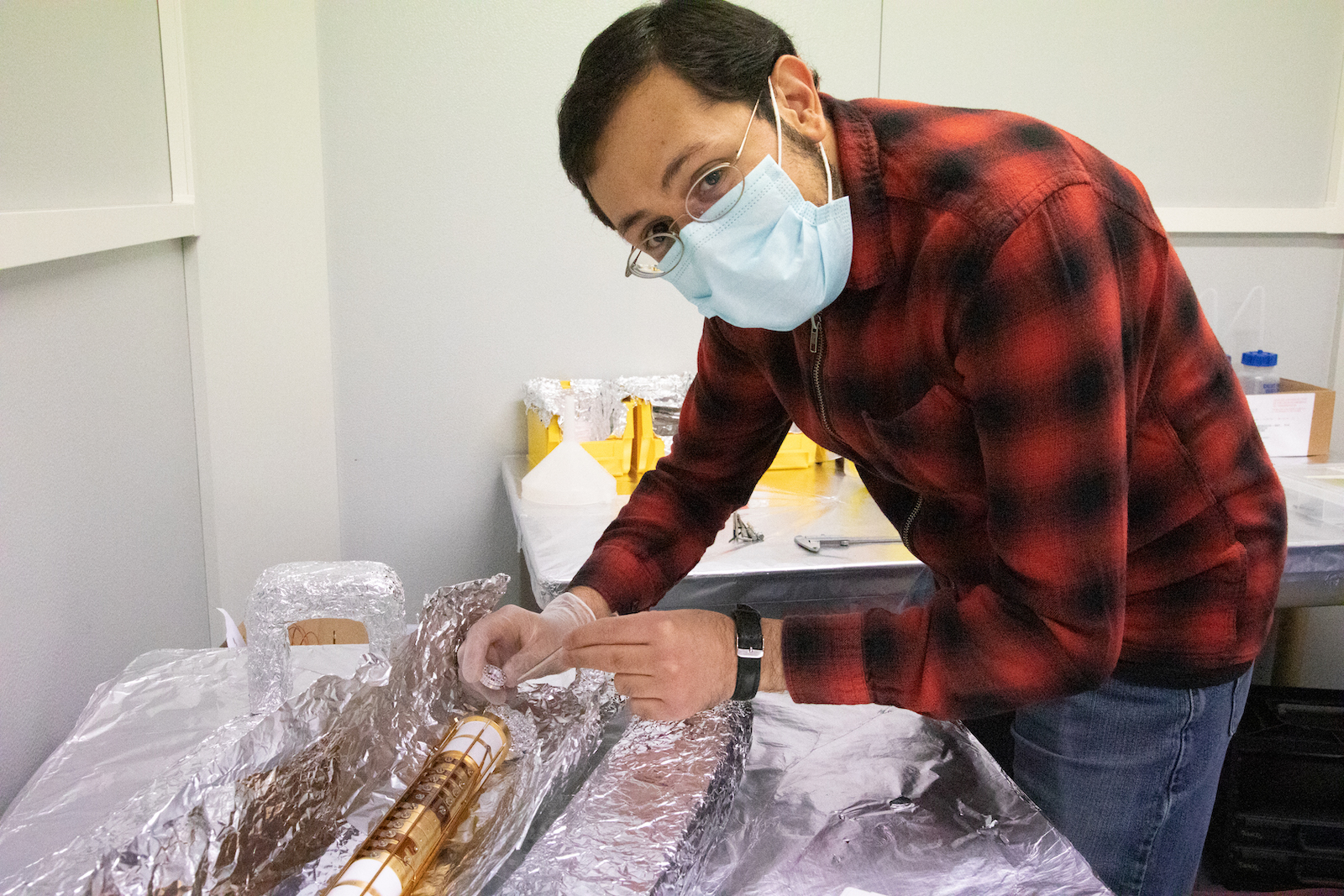
CERN physicist Dr. Muhammed Sameed inspects a new, ultra-thin composite material composed of paralene and aluminum that is key to capturing antiprotons in ALPHA's upgraded antiproton trap. Photo courtesy Muhammed Sameed / CERN
Dr. Muhammed Sameed spends most of his time in the zone: the ALPHA Experiment zone, that is. The lab is located at the heart of CERN—the European Council for Nuclear Research in Geneva, Switzerland—among the most distinguished science organizations and home to the largest particle accelerator in the world. In the zone, the quantum physicist and KAUST alumnus (Master of Science, 2012) runs experiments and tests materials and hardware for projects that study the nature of antimatter.
Sameed is part of an international team of approximately 50 research scientists working on the ALPHA project. Their overall objective is to probe the properties of antimatter to understand the laws of physics and solve longstanding mysteries, such as why so few antimatter particles exist in a universe composed of matter when science equations predict there should be equal amounts.
Getting a hold on antimatter
Antimatter is the mirror opposite of matter, and with opposite charges, i.e. a negatively charged electron in matter is a positively charged electron, or positron, in anti-matter; a positively charged proton in matter is a negatively charged proton, or anti-proton, in antimatter, and so on.
Antimatter and matter annihilate each other upon contact, which makes it challenging for scientists to study antimatter particles. Sameed and team create, trap and study them in the lab, where they can better control and observe them.
When an experiment is running, Sameed said the zone feels like "a living beast where you can hear the periodic beating of compressors, humming of cooling fans behind electronics, startlingly loud hisses from valves as they open and close, and buzzing of the overhead crane as colleagues transport vacuum flasks of liquid helium in and out of the zone."
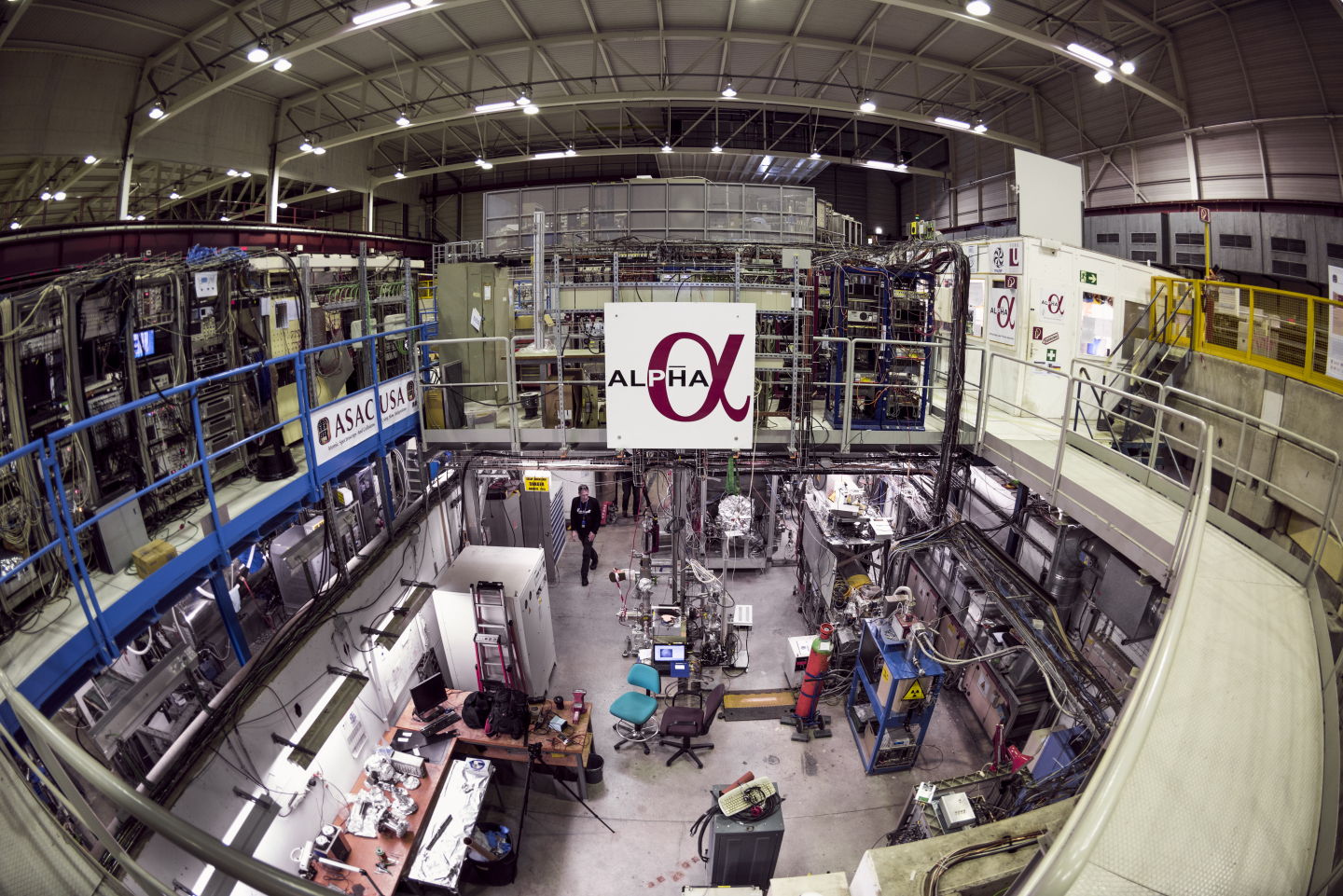
The ALPHA Experiment zone of CERN is the central lab where antimatter experiments are conducted. Photo credit: CERN
After graduating from Cornell with a bachelor of arts degree in physics and mathematics, and prior to attending KAUST for his master's degree, he took a summer internship at CERN. Not only did the experience introduce him to the world-renowned facility and field of particle physics, but it also introduced him to qualities within himself, that were foundational.
"People from all over the world come together at CERN and collaborate in a congenial environment," he said. "Working there tapped skills that I already had, and brought out strengths that I didn't know I had, like working as a team, developing leadership skills and managing projects. In this light, my experience at KAUST was very similar and felt familiar to me."

CERN engineer and physicist Muhammed Sameed graduated from KAUST in 2012 with a master's degree in material's science and engineering. KAUST file photo
Cooling antihydrogen
The recent findings published in Nature demonstrate how the ALPHA scientists were able to measure and observe the behavior of antihydrogen particles in a vacuum chamber by using a laser beam of pulsed ultraviolet light to cool, and consequently slow, their kinetic energy.
Each successive pulse of photons absorbed by the particles resulted in their being cooled until they reached a near absolute zero temperature of 12 millikelvin. The colder the particles, the slower their motions became, which gave the scientists time to study them—an approach that Sameed said paves the way for future antimatter experiments.
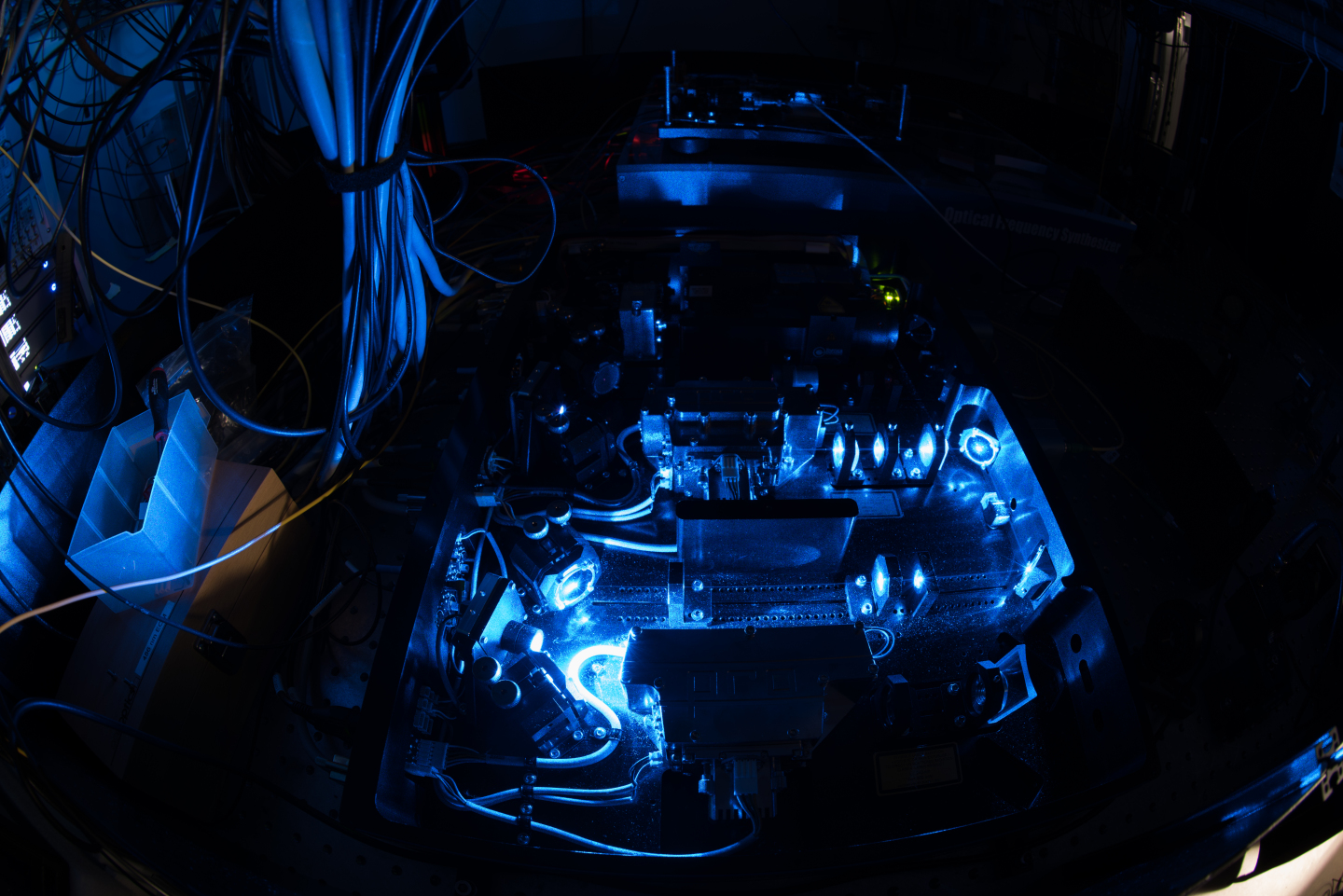
One of the CERN lasers used in ALPHA to probe and slow antihydrogen particles. Photo credit: CERN
In earlier experiments, he said the particles moved too fast to accurately measure, so the margin of error was greater compared to the knowledge of hydrogen, whereas the new laser-cooling technique paves the way to conduct far more precise measurements in the future.
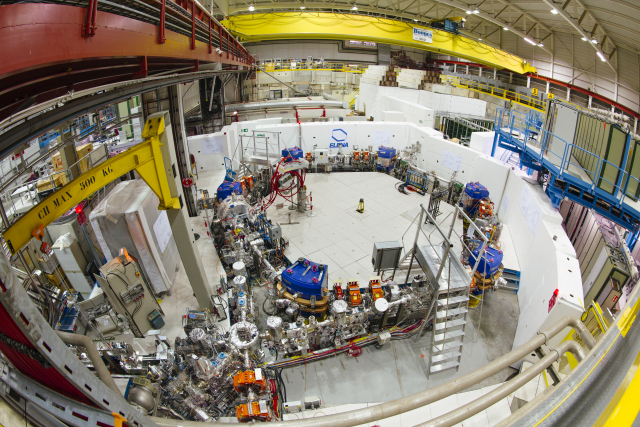
Wide, aerial view of the ELENA, the new decelerator for antimatter experiments at CERN. Photo credit: CERN
The new work focuses on antihydrogen atoms and how they behave under the influence of gravity—whether they will rise or fall when dropped, for example. In order to do this though, they first need to catch the antiprotons.
"The piece of hardware that I'm building is the antiproton trap, which must conform to specific criteria. It's the first piece of equipment that the antiproton beam from ELENA goes through, and every antihydrogen atom we create in the future will have gone through my antiproton trap, so if my system doesn't work, nothing works. All eyes are on this upgrade," he said.
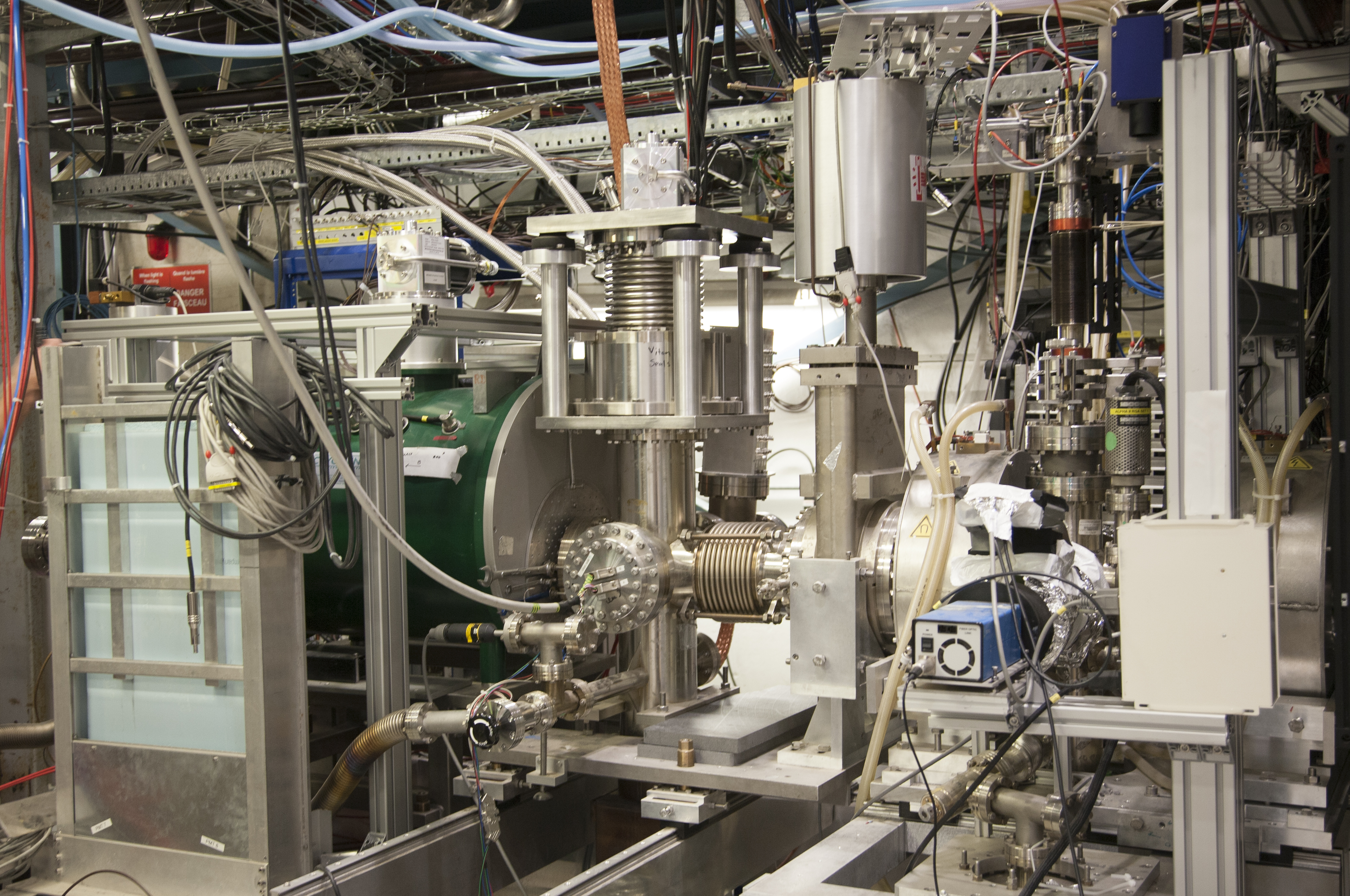
Wide, aerial view of the ELENA, the new decelerator for antimatter experiments at CERN. Photo credit: CERN
Trapping antiprotons
A beam of antiprotons from CERN moves at very high speeds, close to the speed of light. Before antiprotons can be mixed with antielectrons to create antihydrogen, they must be slowed and trapped using electric and magnetic fields inside a vacuum to prevent them from interacting with (and annihilating) normal protons.
The beam must first pass through a device made from very thin foil. In previous experiments, this foil was made from aluminum one millimeter thick, which, according to Sameed, resulted in only 1% of the antiprotons being trapped. The rest had too much energy and couldn't be stopped.
The new material, made from aluminum and parylene and with small amounts of gold plating on both sides, is 1000 times thinner at about one micrometer thick. Highly fragile and subject to break, it can't be used in regular room conditions with a vacuum on one side and the atmosphere on the other.
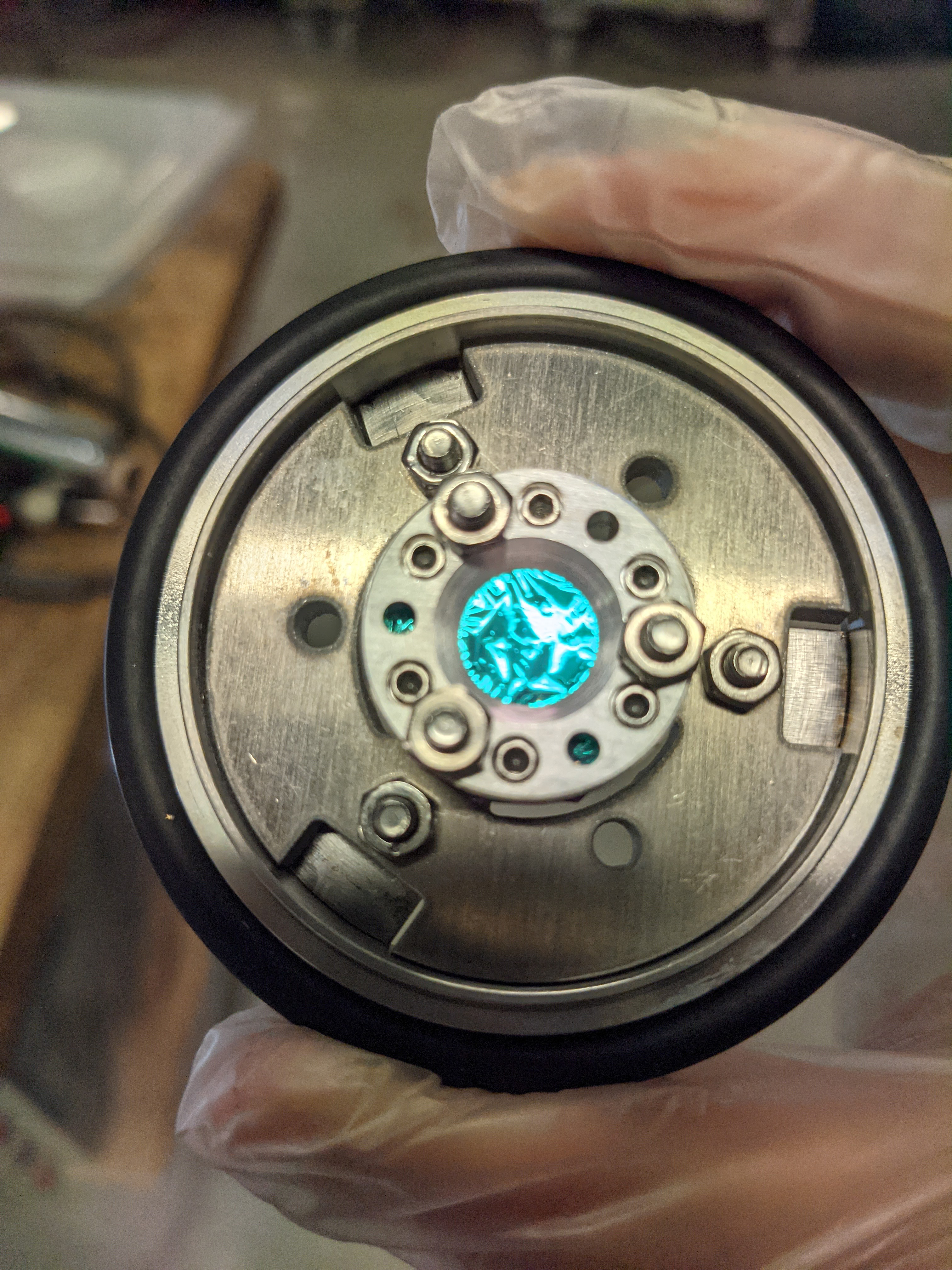
Close view of the new, ultra-thin composite material composed
of paralene and aluminum that is key to capturing antiprotons in ALPHA's upgraded antiproton trap. Photo courtesy Muhammed Sameed / CERN
"We knew that we needed a material that was thinner, lighter and could work at close to absolute zero and survive in an ultra-high vacuum environment," he said. "So we wrote a computer program based on these variables and our understanding of how antiprotons behave and, by process of elimination, came up with this combination of materials. We simulated all aspects of the experiment, put the material in a vacuum chamber to see if it survived, and cooled the system to near absolute zero to see if it worked. Now the only part left is to shoot a beam through it and see what happens."
The team hopes the upgraded equipment will trap 70% of the antiprotons, potentially a huge improvement. Trapping more antiprotons means that they can create more antihydrogen particles, take more data for gravity and spectroscopy measurements, and perform more physics studies, in general, in the same amount of time as they did in the past.
Fundamental and applied science
Though the research at CERN is fundamental, Sameed said that information learned about antimatter could potentially be relevant to industry, medical and other professional fields. In the case of medicine, antimatter knowledge is already being used in hospitals for PET scans (Positron Emission Tomography) to find cancer cells in the body. What other uses there will be is hard to say at this point, he said.
Given the technology that CERN now has, and that breakthroughs are being made much faster than anticipated, Sameed said the team is starting to think about how to extend the research to include more complex elements such as helium and antihelium, but this will bring new challenges.
"If we progress to antihelium, then we have to add antineutrons into the mix. We know how to create them, but we don't know how to trap them yet. Once we figure out how to do this, there is definitely potential to create and do this with other elements. If you crack the code for one, then you can crack it for others. It'll be interesting."
Related:
- Two-minute video: ALPHA Experiment at CERN
- CERN accelerating science: Antimatter
-
Alumni focus: Muhammed Sameed

